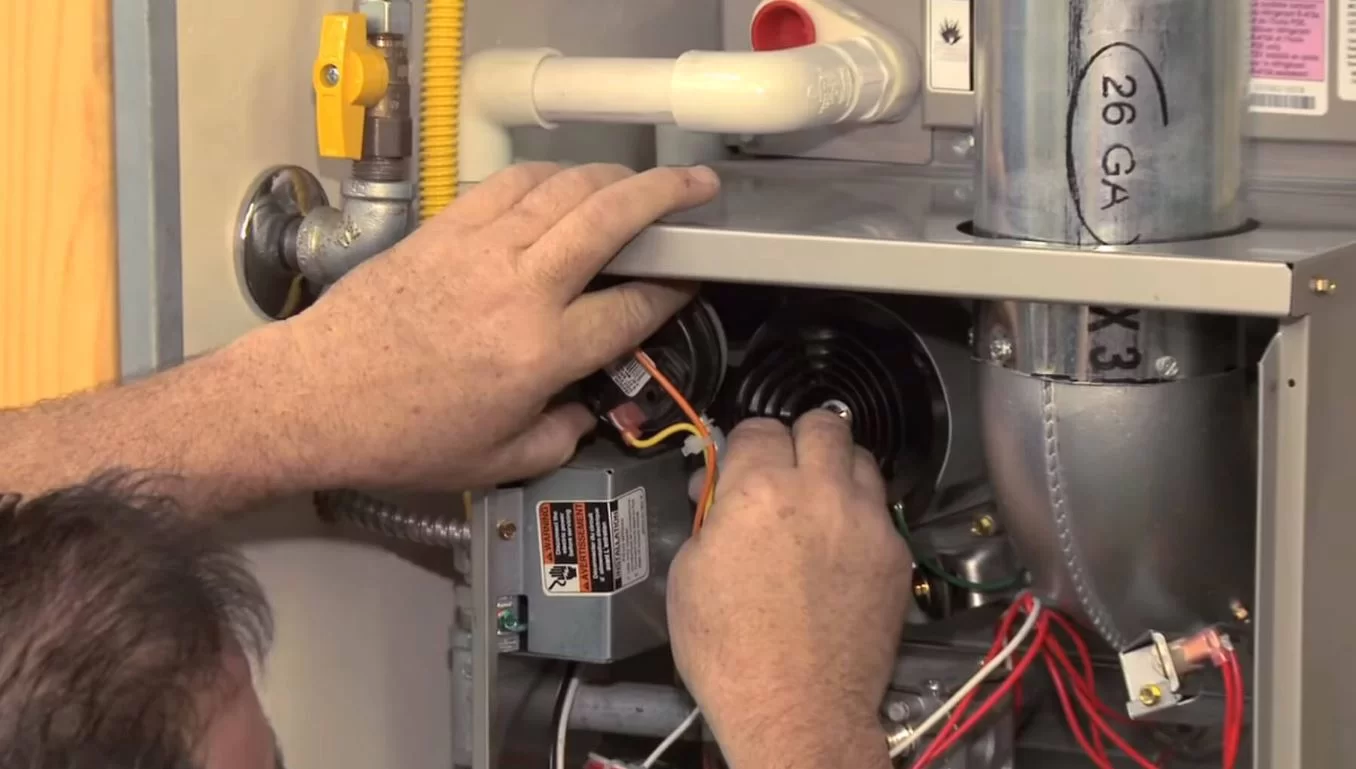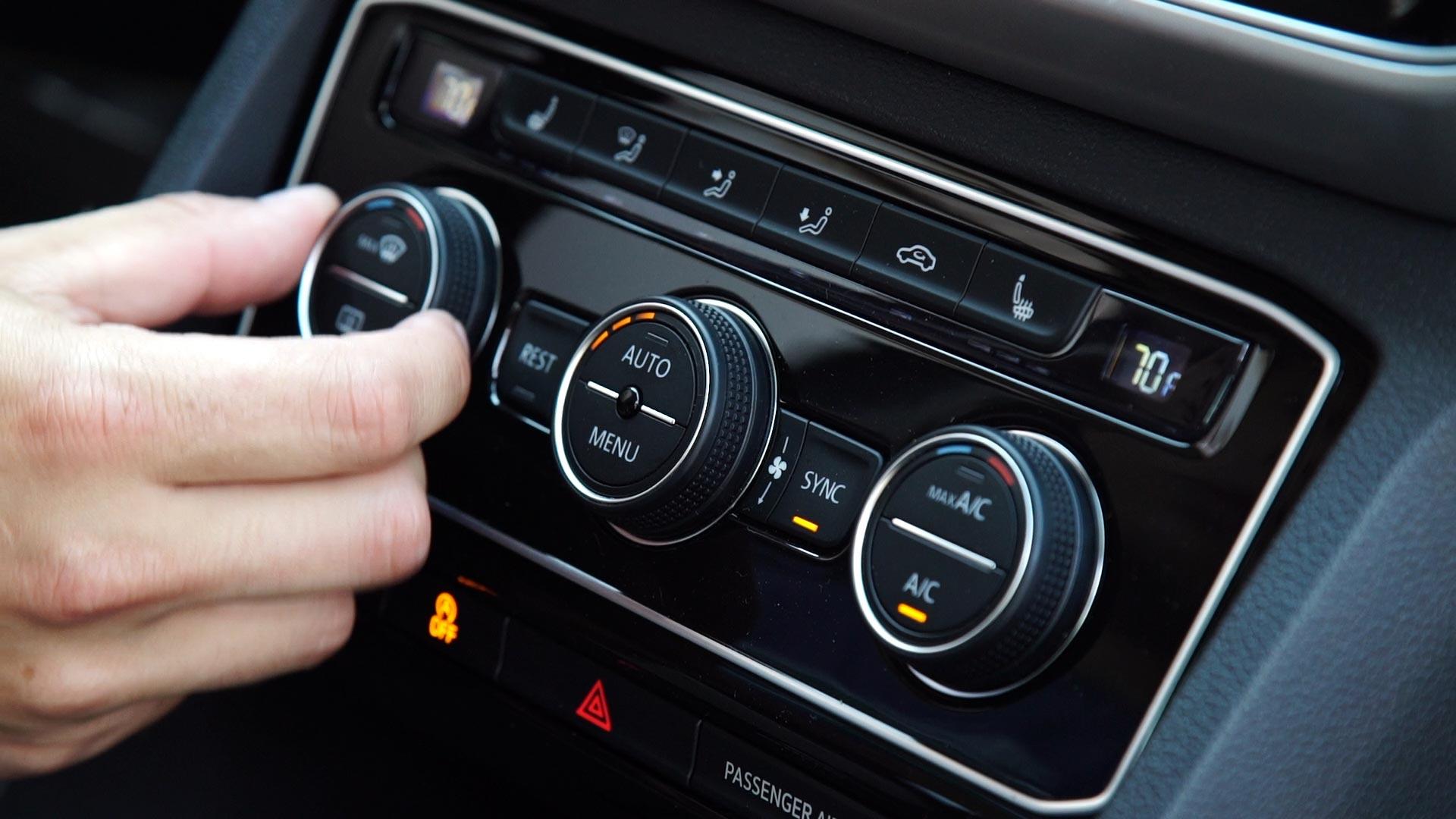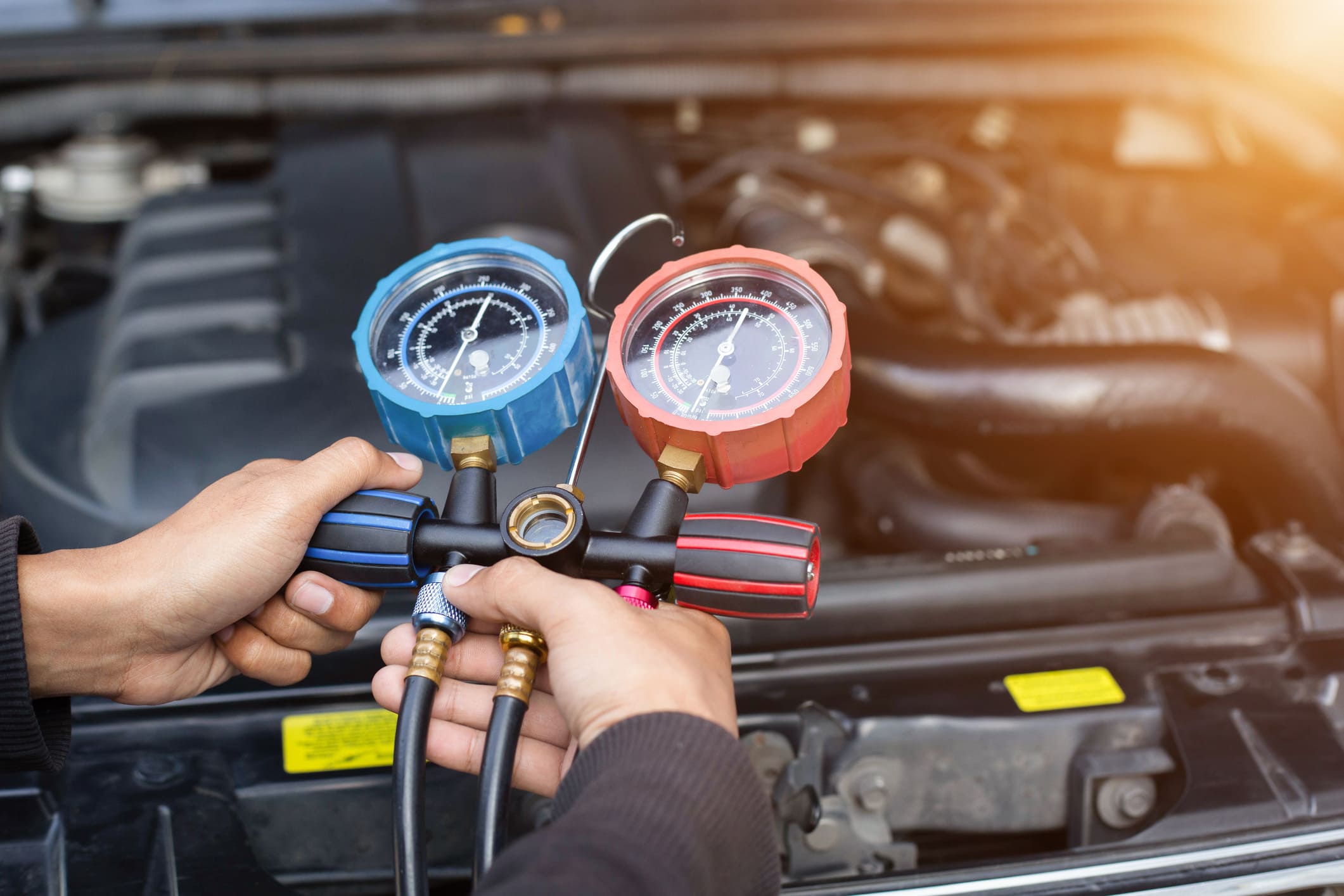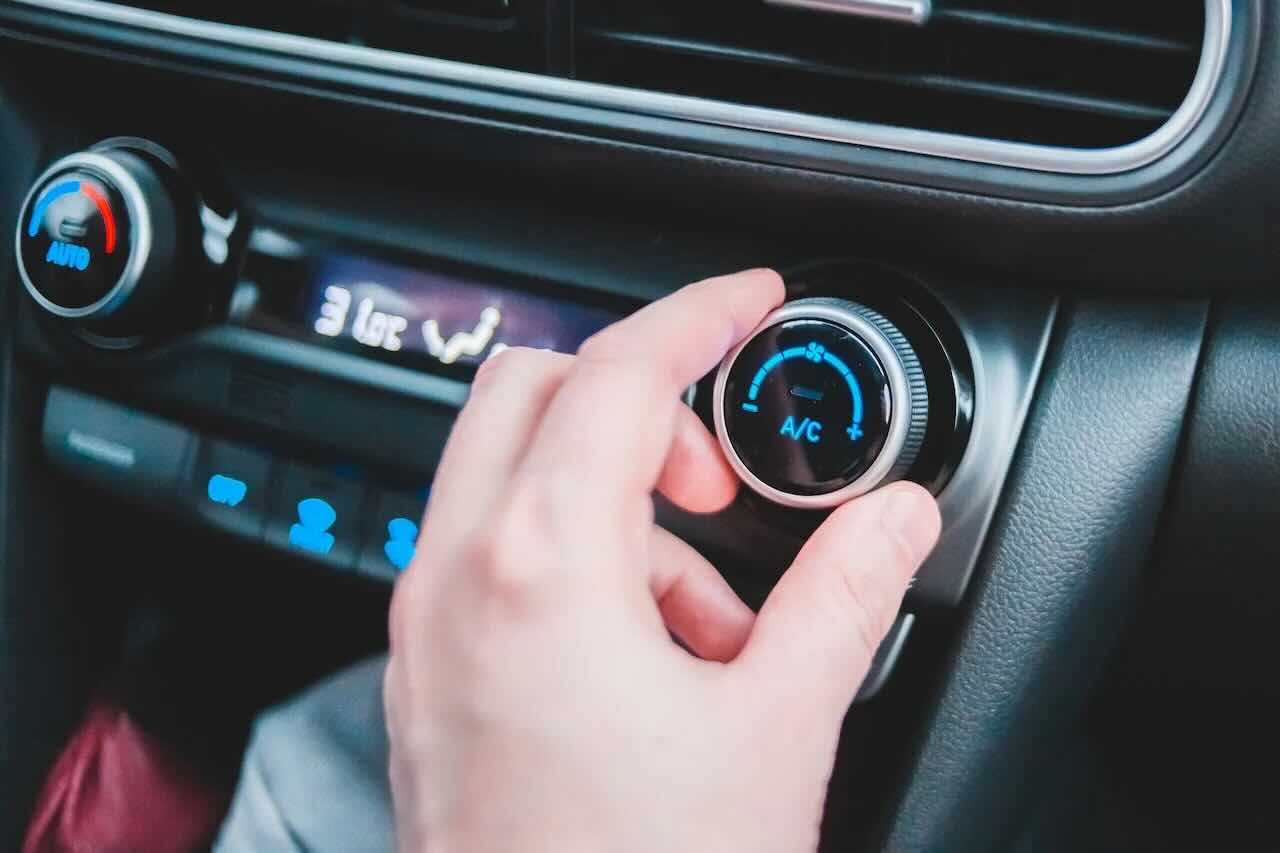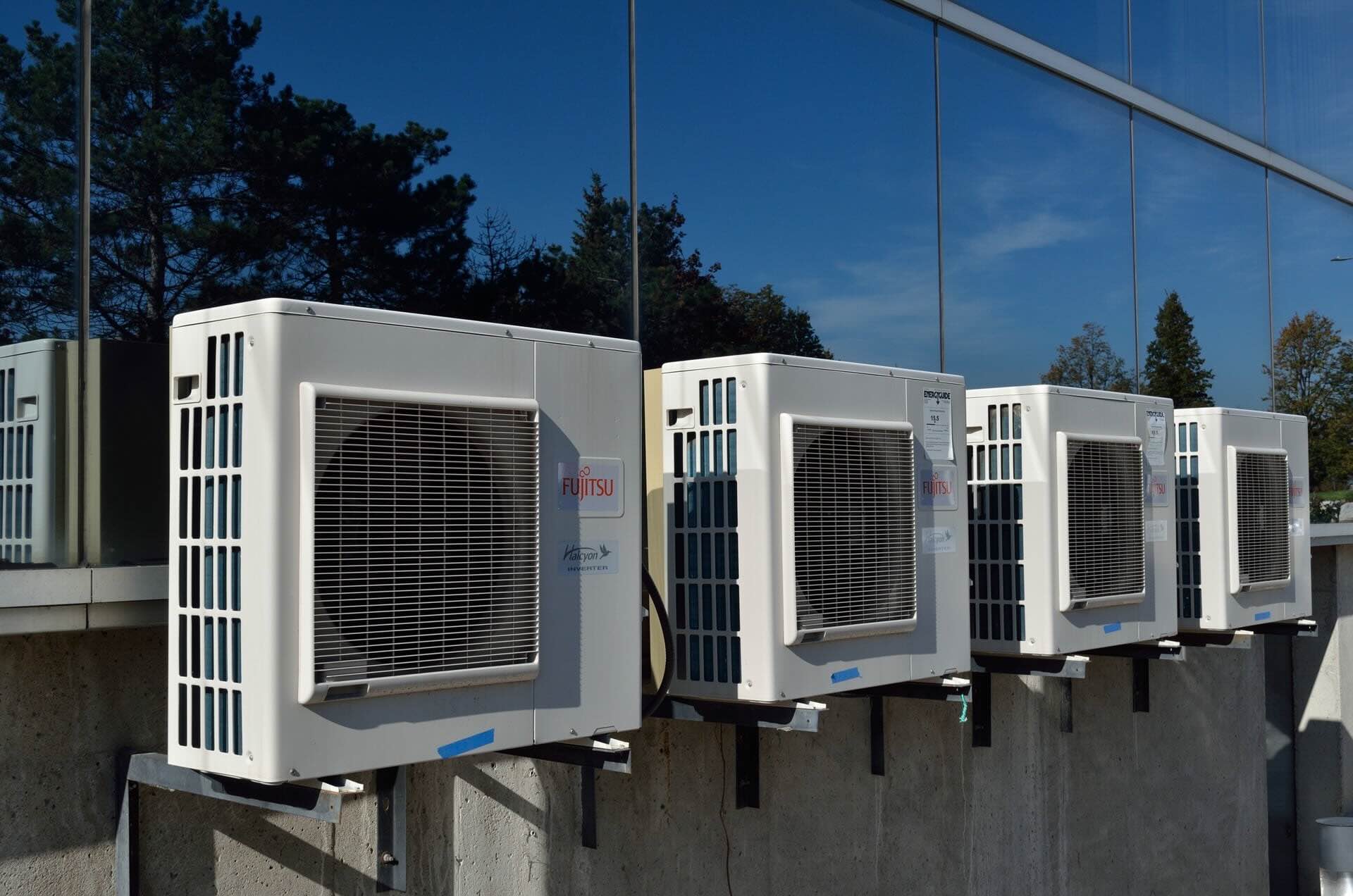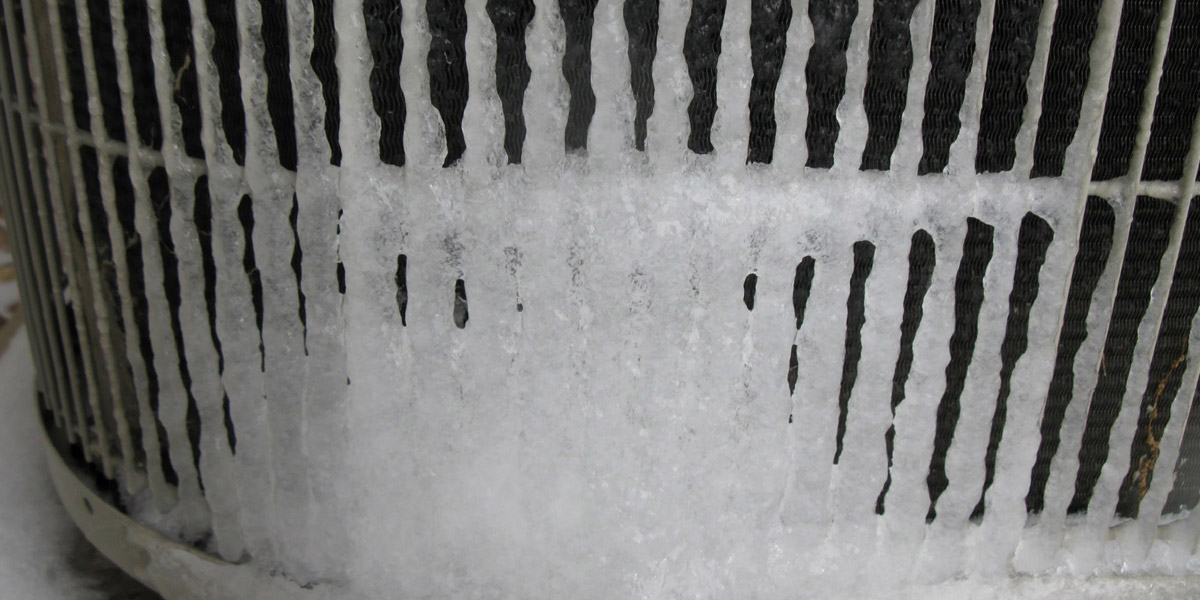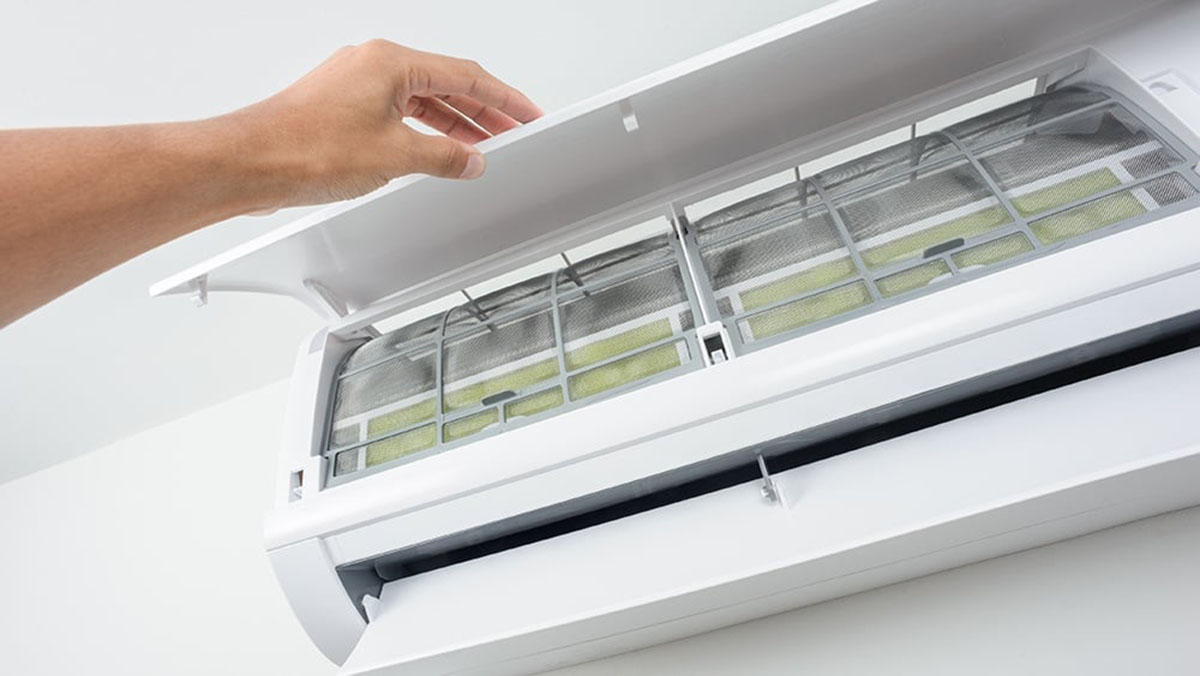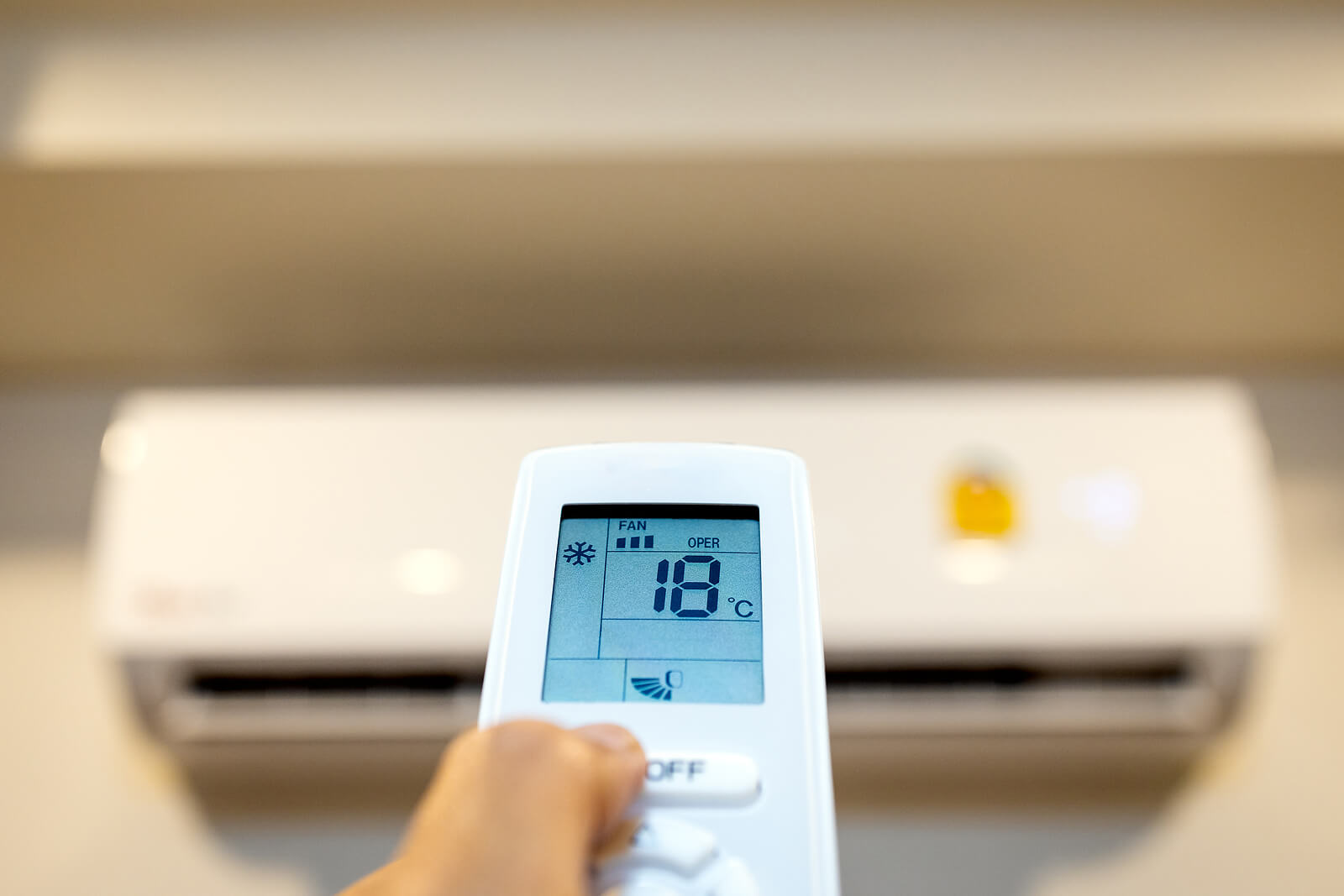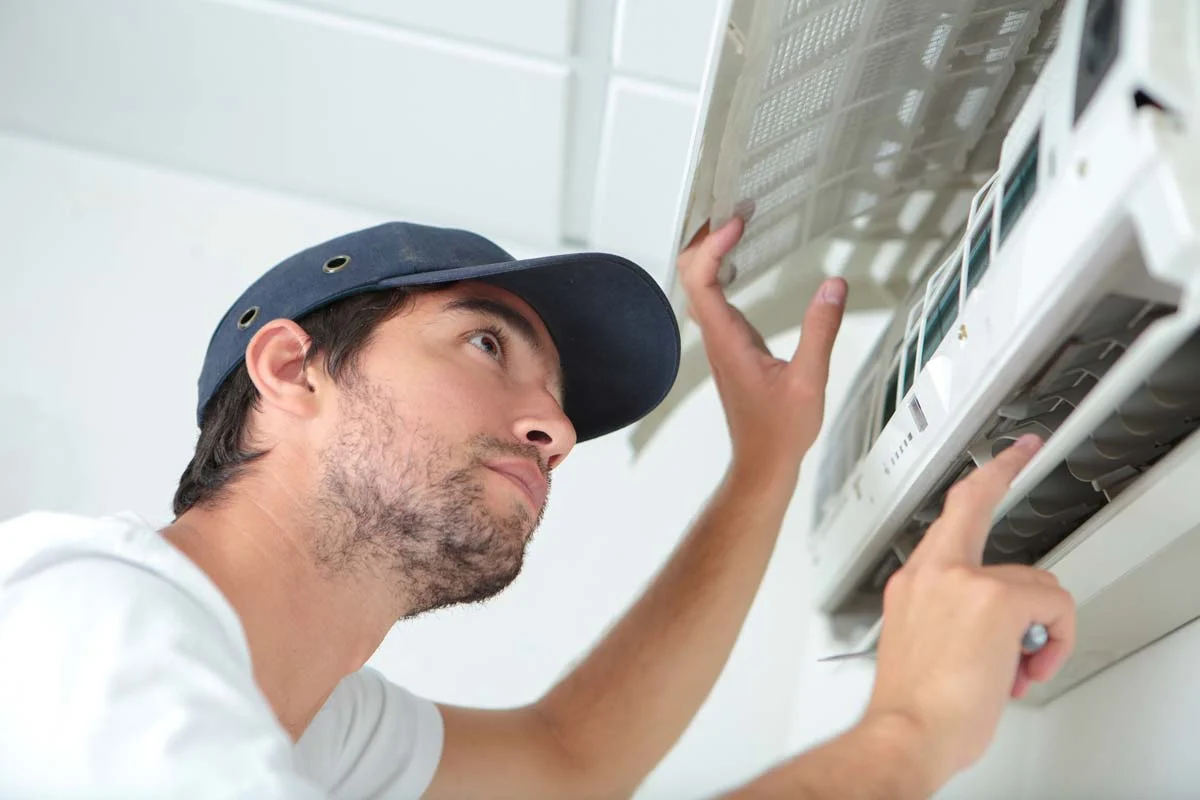Home>Home Maintenance>Why Is My Car Air Conditioner Not Blowing Cold Air
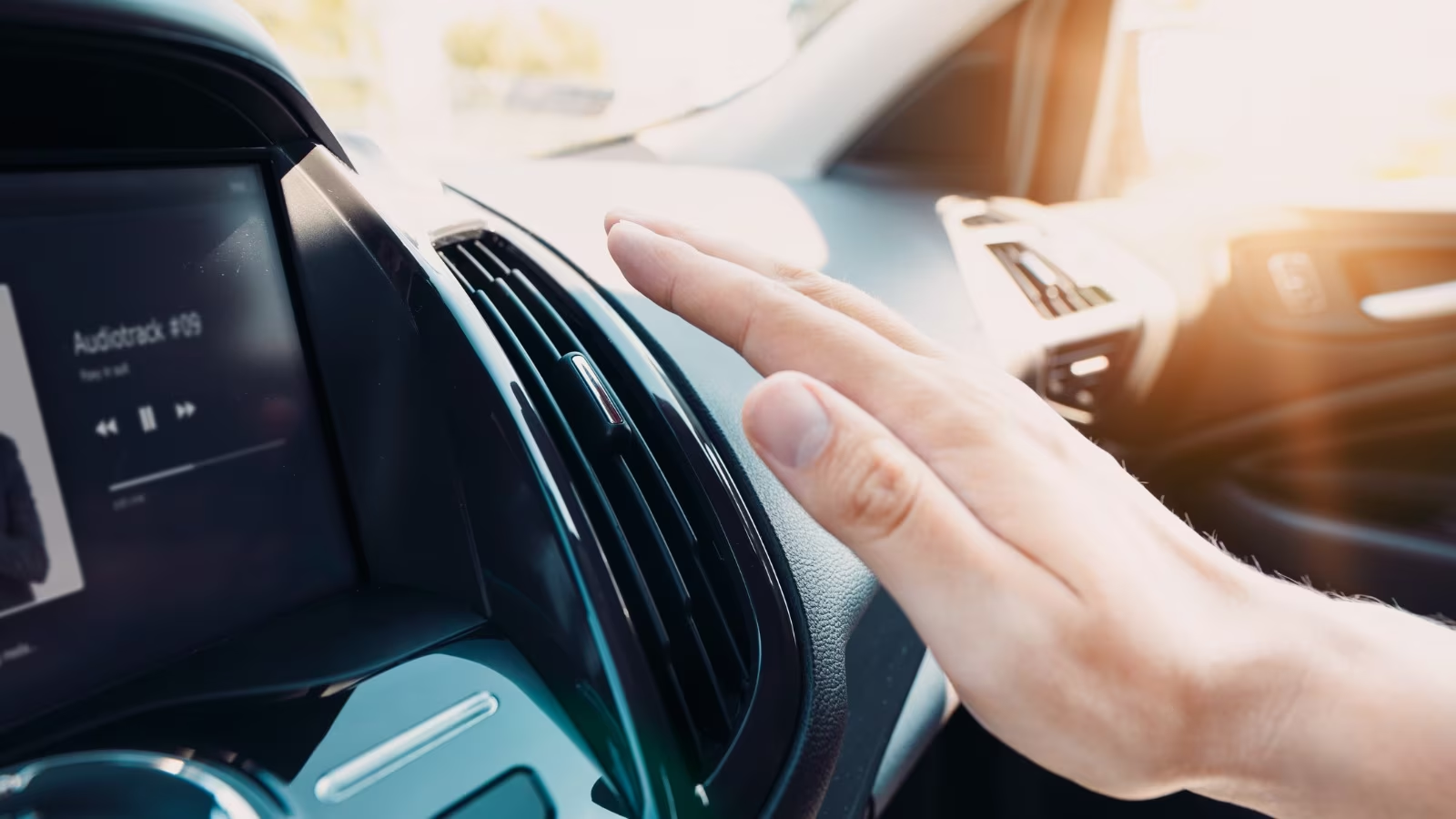

Home Maintenance
Why Is My Car Air Conditioner Not Blowing Cold Air
Modified: October 20, 2024
Having trouble with your car air conditioner not blowing cold air? Find out possible reasons and solutions with our ultimate guide to home maintenance.
(Many of the links in this article redirect to a specific reviewed product. Your purchase of these products through affiliate links helps to generate commission for Storables.com, at no extra cost. Learn more)
Introduction
Welcome to the troubleshooting guide for car air conditioners. There’s nothing more frustrating than stepping into your car on a hot summer day, only to find that your air conditioner is not blowing cold air. It can make the drive uncomfortable and unbearable, especially during long journeys or in areas with scorching temperatures.
There can be several reasons why your car’s air conditioner is not functioning properly. Understanding the common causes and knowing how to troubleshoot the issue can save you time and money. In this article, we will explore some of the most common causes of a car air conditioner not blowing cold air and provide troubleshooting tips to help you get it back to working condition.
Key Takeaways:
- Low refrigerant levels and a faulty compressor are common culprits for a car’s air conditioner not blowing cold air. Regularly checking and maintaining these components can help ensure optimal cooling performance.
- Clearing air vents and examining the blower motor are essential troubleshooting steps to address warm air blowing from a car’s AC system. Regular maintenance and professional inspections can prevent issues and maintain comfortable driving experiences.
Common Causes of Car Air Conditioner Not Blowing Cold Air
When your car’s air conditioner fails to blow cold air, it is often indicative of an underlying issue. Here are some common causes to consider:
- Low Refrigerant Levels: One of the most common causes is low refrigerant levels. Refrigerant is the substance responsible for cooling the air in your car’s AC system. If the refrigerant is low, it can impair the cooling process and result in warm air blowing from the vents.
- Faulty Compressor: The compressor is the heart of your car’s AC system. If it becomes faulty or fails to engage properly, it can prevent the refrigerant from circulating and cooling the air. This can lead to warm air blowing instead of cold air.
- Blockage in Air Vents: Another possible cause is a blockage in the air vents or ducts. Over time, dirt, debris, or even small objects can accumulate and obstruct the airflow. This can hinder the cooling process and result in insufficient cold air output.
- Malfunctioning Blower Motor: The blower motor is responsible for circulating the cold air produced by the AC system into the cabin of your car. If the blower motor is malfunctioning or not working at all, it can prevent the cold air from reaching the vents.
- Electrical Issues: Faulty electrical connections or components can also cause your car’s AC system to malfunction. This can disrupt the proper functioning of the compressor, blower motor, or other crucial parts of the system, resulting in a lack of cold air output.
- Thermostat Problems: The thermostat in your car’s AC system controls the temperature and regulates the cooling process. If the thermostat is faulty or not calibrated correctly, it may not signal the AC system to produce cold air, leading to warm air blowing from the vents.
Identifying the specific cause for your car’s air conditioner not blowing cold air can be challenging. It often requires a thorough inspection and diagnosis by a professional technician. However, with some troubleshooting tips and basic knowledge, you may be able to address certain issues on your own. Let’s explore some troubleshooting tips to help get your car’s AC system back to its cooling glory.
Low Refrigerant Levels
One of the most common reasons why a car’s air conditioner is not blowing cold air is due to low refrigerant levels. Refrigerant is the substance responsible for cooling the air in your car’s AC system. Over time, refrigerant can leak out or become depleted, causing the AC system to struggle in producing cold air. Here’s what you need to know:
Symptoms: When your car’s refrigerant levels are low, you may notice that the air blowing from the vents is warm or not as cold as it used to be. Additionally, you might hear unusual noises coming from the AC system, such as hissing or bubbling sounds.
Troubleshooting steps:
- Inspect for visible leaks: Start by visually inspecting the AC system for any signs of refrigerant leaks. Look for oily spots or stains on components or fittings. If you notice any leaks, it is essential to have them repaired by a qualified technician.
- Recharge the refrigerant: If there are no visible leaks, you may need to recharge the refrigerant in your car’s AC system. This task is best done by a professional technician who can safely handle and replenish the refrigerant to the correct levels.
- Note: It is important to note that simply adding refrigerant without addressing any leaks will result in a temporary fix. It is crucial to fix any leaks in the system to prevent the refrigerant from escaping again.
Low refrigerant levels should be addressed promptly to ensure optimal performance of your car’s AC system. It is recommended to consult a professional technician who can properly diagnose the issue, repair any leaks, and recharge the refrigerant to the appropriate levels.
Next, let’s move on to another common cause of a car’s air conditioner not blowing cold air: a faulty compressor.
Faulty Compressor
The compressor plays a vital role in the cooling process of your car’s air conditioning system. It is responsible for compressing and circulating the refrigerant, allowing it to absorb heat from the cabin and expel it outside. If the compressor becomes faulty, it can hinder the proper cooling of the air. Here’s what you need to know:
Symptoms: When the compressor is not working correctly, you may notice that the air blowing from the vents is warm or not as cold as it should be. You may also hear strange noises coming from the compressor, such as grinding or rattling sounds.
Troubleshooting steps:
- Check compressor engagement: Start your car’s engine and turn on the AC system. Observe the compressor to see if it engages and starts spinning. If the compressor does not engage, it may indicate a problem with the electrical connections or a faulty compressor clutch. Consult a professional technician to diagnose and repair the issue.
- Inspect compressor components: Visually inspect the compressor for any visible signs of damage, such as leaks or physical wear. If there are any visible issues, it is crucial to have them addressed and repaired by a qualified technician.
- Note: The compressor is a complex component of the car’s AC system, and repairing or replacing it requires specialized knowledge and tools. It is recommended to seek professional assistance for compressor-related issues.
Addressing a faulty compressor is essential for restoring the proper cooling function of your car’s air conditioner. A professional technician can diagnose the issue accurately and determine whether the compressor needs to be repaired or replaced.
Next, we’ll discuss another potential cause for a car’s air conditioner not blowing cold air: blockage in air vents.
Blockage in Air Vents
A blockage in the air vents or ducts of your car’s air conditioning system can significantly impact the airflow and prevent the cold air from reaching the cabin. Over time, dirt, dust, debris, or even small objects can accumulate and obstruct the smooth airflow. Here’s what you need to know:
Symptoms: When there is a blockage in the air vents, you may experience reduced airflow or find that only warm air is coming out of the vents. In some cases, you may also notice unusual smells or hear whistling sounds when the AC system is running.
Troubleshooting steps:
- Inspect and clean the air vents: Start by visually inspecting the air vents for any visible signs of blockage. Use a flashlight if necessary to check the ducts for debris. If you notice any accumulation of dirt, dust, or other obstructions, use a soft brush or compressed air to clean the vents. Be careful not to damage the vents or push the debris further into the system.
- Check the cabin air filter: The cabin air filter plays a crucial role in maintaining the air quality inside your car’s cabin. If the filter is clogged or dirty, it can restrict the airflow. Consult your car’s manual to locate and replace the cabin air filter if necessary.
- Professional cleaning: If you’re unable to clear the blockage yourself or suspect a more severe obstruction in the ducts, it’s advisable to seek professional cleaning services. Professional technicians have specialized tools and equipment to effectively remove blockages and restore proper airflow.
Clearing any blockages in the air vents is essential for improving the airflow and ensuring cold air can circulate through your car’s AC system. Regular maintenance and cleaning of the air vents and cabin air filter can help prevent blockages and maintain optimal performance.
Next, we’ll discuss another potential cause for a car’s air conditioner not blowing cold air: a malfunctioning blower motor.
Read more: Why Is My Air Conditioner Not Blowing Hard
Malfunctioning Blower Motor
The blower motor is responsible for circulating the cold air produced by your car’s air conditioning system into the cabin. If the blower motor is malfunctioning or not working at all, it can prevent the cold air from reaching the vents, resulting in a lack of cold airflow. Here’s what you need to know:
Symptoms: When the blower motor is malfunctioning, you may notice a decrease in the amount of airflow or no airflow at all coming from the vents, even if the AC system is turned on. You may also hear strange noises coming from the blower motor, such as squeaking or grinding sounds.
Troubleshooting steps:
- Inspect the blower motor: Locate the blower motor in your car’s AC system, usually located behind the glove compartment or under the dashboard. Visually inspect the motor for any signs of physical damage or buildup of debris. If there are any visible issues, such as a worn-out motor or clogged fan, it may indicate a malfunctioning blower motor.
- Test the blower motor: To check whether the blower motor is functioning properly, turn on your car’s engine and the AC system. Gradually increase the blower speed and listen for any unusual noises. If the motor fails to start or make abnormal sounds, it may require replacement.
- Consult a professional technician: If you suspect a malfunctioning blower motor, it is recommended to consult a professional technician. They have the expertise and tools to diagnose the issue accurately and determine the appropriate course of action, whether it be repairing or replacing the blower motor.
Addressing a malfunctioning blower motor is essential to restore the proper airflow and circulation of cold air in your car’s AC system. A professional technician can diagnose the issue accurately and recommend the best solution to get your blower motor back in working condition.
Next, we’ll explore another potential cause for a car’s air conditioner not blowing cold air: electrical issues.
Electrical Issues
Faulty electrical connections or components can disrupt the proper functioning of your car’s air conditioning system and contribute to a lack of cold air. Electrical issues can affect various parts of the AC system, such as the compressor, blower motor, or sensors, leading to a diminished cooling performance. Here’s what you need to know:
Symptoms: When there are electrical issues, you may experience inconsistent cooling, intermittent operation of the AC system, or a complete failure to produce cold air. You may also notice that the AC controls or buttons do not respond as they should, or there are unusual warning lights on the dashboard.
Troubleshooting steps:
- Inspect electrical connections: Begin by visually inspecting the electrical connections related to the AC system, such as the wiring harness, fuses, and relays. Look for any loose connections, corrosion, or damaged wires. If you find any issues, ensure that the connections are secure and replace any faulty components.
- Test the AC controls: Check the functionality of the AC controls, such as the switches, buttons, and knobs. Make sure they operate smoothly and respond correctly to your inputs. If there are any issues, it may indicate a problem with the control module or switches, which might need to be replaced.
- Professional diagnosis: If you’re unable to identify or resolve the electrical issues, it is advisable to seek professional assistance. A qualified technician can perform a comprehensive diagnosis using specialized equipment to pinpoint the exact electrical problem and perform the necessary repairs.
Addressing electrical issues in your car’s AC system is crucial for restoring the proper functioning and reliable cooling performance. It is recommended to consult a professional technician who has the expertise to diagnose and repair electrical problems accurately.
Next, let’s discuss another potential cause for a car’s air conditioner not blowing cold air: thermostat problems.
Thermostat Problems
The thermostat in your car’s air conditioning system is responsible for regulating the temperature and controlling the cooling process. If the thermostat is faulty or not calibrated correctly, it may not signal the AC system to produce cold air, resulting in warm air blowing from the vents. Here’s what you need to know:
Symptoms: When there are thermostat problems, you may notice that the air blowing from the vents is consistently warm, regardless of the temperature setting on the AC controls. You may also experience fluctuations in cooling performance or the AC system not turning on at all.
Troubleshooting steps:
- Check the temperature setting: Start by ensuring that the temperature setting on the AC controls is adjusted correctly. Sometimes, a simple adjustment may resolve the issue.
- Calibrate the thermostat: If the temperature setting appears to be correct but the AC system is not responding accordingly, it may indicate the need for thermostat calibration. Consult your car’s manual for instructions on how to calibrate the thermostat or seek professional assistance.
- Test the thermostat: If the thermostat calibration does not resolve the problem, further testing of the thermostat may be necessary. This requires specialized tools and knowledge, so it is recommended to consult a professional technician who can accurately diagnose and repair thermostat-related issues.
- Replace the thermostat: In some cases, a faulty thermostat may need to be replaced. If testing and calibration efforts do not restore proper functionality, consult a professional technician to determine if a thermostat replacement is required.
Addressing thermostat problems is essential for maintaining the proper regulation and control of your car’s AC system. A professional technician can provide accurate diagnostics and recommend the appropriate solution to ensure optimal cooling performance.
Now that we have explored the common causes of a car’s air conditioner not blowing cold air, let’s move on to some troubleshooting tips to help you address these issues.
Check the refrigerant levels in your car’s air conditioning system. Low refrigerant levels can cause the air conditioner to blow warm air. If the levels are low, have a professional mechanic inspect for leaks and recharge the system.
Troubleshooting Tips for Car Air Conditioner Not Blowing Cold Air
If your car’s air conditioner is not blowing cold air, there are several troubleshooting steps you can take to try and resolve the issue before seeking professional assistance. Here are some tips to help you get your car’s AC system back to blowing cold air:
- Check Refrigerant Levels: Start by checking the refrigerant levels in your car’s AC system. If the refrigerant is low, it may indicate a leak or other issues that need to be addressed. Recharging the refrigerant to the proper levels can often restore the cooling performance.
- Inspect the Compressor: The compressor is critical for the cooling process. Inspect it for any visible signs of damage or leaks. Ensure that the compressor engages and spins properly. Addressing any compressor issues can help restore cold air output.
- Clear Air Vents: Check for any blockages in the air vents or ducts. Remove any dirt, debris, or objects that may be obstructing the airflow. Cleaning the vents and ensuring unobstructed airflow can improve cooling performance.
- Examine the Blower Motor: Inspect the blower motor for any signs of malfunction or damage. Make sure it is functioning correctly and circulating the cold air as intended. Repair or replace a faulty blower motor to restore proper airflow.
- Check the Electrical Connections: Inspect the electrical connections related to the AC system, such as wiring harnesses, fuses, and relays. Ensure that the connections are secure, and there are no loose or damaged wires. Faulty electrical connections can affect the AC system’s performance.
- Test the Thermostat: Check the functionality of the thermostat by adjusting the temperature settings and observing if the AC system responds accordingly. Calibrate or replace a faulty thermostat to ensure proper temperature regulation.
It is important to note that troubleshooting tips are meant to address common issues and can vary depending on the specific make and model of your car. If you are unable to resolve the problem or are uncertain about performing any of these steps, it is recommended to consult a professional technician who can accurately diagnose and repair the issue.
By following these troubleshooting tips, you can potentially resolve the problem of your car’s air conditioner not blowing cold air and enjoy a comfortable driving experience even in hot weather conditions.
Now, let’s wrap up the article.
Read more: Why Is My Window AC Not Blowing Cold Air
Check Refrigerant Levels
One of the most common causes of a car’s air conditioner not blowing cold air is low refrigerant levels. Refrigerant is the substance responsible for absorbing heat from the air and cooling it down before it is blown into the car’s cabin. If the refrigerant levels are low, the AC system will struggle to produce cold air, resulting in warm air blowing from the vents. Here’s what you need to know:
Symptoms: When refrigerant levels are low, you may notice that the air blowing from the AC vents is not as cold as it used to be, or it may even feel warm. Another sign of low refrigerant levels is the presence of unusual noises, such as hissing or bubbling sounds, coming from the AC system.
Troubleshooting steps:
- Inspect for visible leaks: Start by visually inspecting the AC system for any signs of refrigerant leaks. Look for oily spots or stains around the AC components or fittings. If you notice any leaks, it is crucial to have them repaired by a professional technician. Leaks can cause the refrigerant to escape and will need to be fixed before recharging the system.
- Recharge the refrigerant: If there are no visible leaks, the next step is to recharge the refrigerant to the appropriate levels. This task is best left to a professional technician who has the tools and knowledge to handle refrigerant safely. They will also be able to determine the right amount of refrigerant needed for your specific vehicle make and model.
- Note: Recharging the refrigerant is a temporary solution if your AC system has a leak. It is essential to address the cause of the leak to prevent the refrigerant from escaping again. A professional technician can perform a leak detection test to identify and repair any leaks in the system.
Checking and maintaining the proper refrigerant levels in your car’s AC system is crucial for its optimal performance. If you suspect low refrigerant levels, it is recommended to consult a professional technician who can accurately diagnose the issue, repair any leaks, and recharge the refrigerant to the appropriate levels.
Next, let’s move on to troubleshooting the second cause: a faulty compressor.
Inspect the Compressor
The compressor is a vital component of your car’s air conditioning system. It is responsible for compressing the refrigerant and circulating it through the system, allowing it to absorb heat from the air and produce cold air. A faulty compressor can lead to a lack of cold air blowing from the vents. Here’s what you need to know:
Symptoms: When the compressor is not functioning properly, you may notice that the air blowing from the vents is warm or not as cold as it should be. You might also hear strange noises coming from the compressor, such as grinding or rattling sounds.
Troubleshooting steps:
- Check compressor engagement: Start your car’s engine and turn on the AC system. Observe the compressor to see if it engages and starts spinning. If the compressor does not engage, it may indicate a problem with the electrical connections or a faulty compressor clutch.
- Inspect for visible damage or leaks: Visually inspect the compressor for any visible signs of damage, such as oil stains or physical wear. Leaks can also indicate a problem with the compressor. If you notice any issues, it is essential to have them addressed and repaired by a qualified technician.
- Professional diagnosis: If you suspect a faulty compressor but are unable to identify the exact issue, it is advisable to consult a professional technician. They have the expertise and tools to perform a thorough diagnosis and determine whether the compressor needs to be repaired or replaced.
The compressor is a complex component of the AC system, and repairing or replacing it requires specialized knowledge and equipment. It is recommended to seek professional assistance if you suspect a problem with the compressor.
Addressing compressor issues promptly is crucial for restoring the proper cooling function of your car’s air conditioner. A professional technician can accurately diagnose the issue and recommend the best course of action to get your compressor back in working condition.
Now, let’s move on to troubleshooting the next cause: clearinair vents.
Clear Air Vents
A common cause for a car’s air conditioner not blowing cold air is a blockage in the air vents or ducts. Over time, dirt, dust, debris, or even small objects can accumulate and obstruct the smooth airflow, preventing the cold air from reaching the cabin. Here’s what you need to know:
Symptoms: When there is a blockage in the air vents, you may experience reduced airflow or find that only warm air is coming out of the vents. You may also notice unusual smells or hear whistling sounds when the AC system is running.
Troubleshooting steps:
- Visually inspect the air vents: Start by inspecting the air vents for any visible signs of blockage. Use a flashlight if necessary to check for debris or obstructions. If you notice any accumulation of dirt, dust, or other foreign objects, it is essential to clear them out.
- Use a soft brush or compressed air: Once you have identified the blockage, use a soft brush or compressed air to remove the dirt and debris from the air vents. It is important to be gentle to avoid damaging the vents or pushing the debris further into the system.
- Check the cabin air filter: The cabin air filter is responsible for filtering the air that enters the cabin. If the filter becomes clogged or dirty, it can obstruct the airflow. Consult your car’s manual to locate the cabin air filter and replace it if necessary.
- Professional cleaning: If you’re unable to clear the blockage yourself or suspect a more severe obstruction in the ducts, it’s advisable to seek professional cleaning services. Professional technicians have specialized tools and equipment to effectively remove blockages and restore proper airflow.
Clearing any blockages in the air vents is essential for improving the airflow and ensuring that the cold air can circulate through your car’s AC system. Regular maintenance and cleaning of the air vents, as well as the cabin air filter, can help prevent blockages and maintain optimal cooling performance.
Now, let’s move on to troubleshooting the next cause: examining the blower motor.
Examine the Blower Motor
The blower motor is responsible for circulating the cold air produced by your car’s air conditioning system into the cabin. If the blower motor is malfunctioning or not working at all, it can prevent the cold air from reaching the vents, resulting in a lack of cold airflow. Here’s what you need to know:
Symptoms: When the blower motor is not functioning properly, you may notice a decrease in the amount of airflow or no airflow at all coming from the vents, even if the AC system is turned on. You may also hear strange noises coming from the blower motor, such as squeaking or grinding sounds.
Troubleshooting steps:
- Locate the blower motor: The blower motor is typically located behind the glove compartment or under the dashboard. Consult your car’s manual if you’re unsure about its exact location.
- Visually inspect the blower motor: Inspect the blower motor for any signs of physical damage, such as loose wires or broken fan blades. If you notice any issues, it may indicate a malfunctioning blower motor that needs to be repaired or replaced.
- Test the blower motor: With the car’s engine running and the AC system turned on, increase the blower speed gradually and listen for any unusual noises. If the blower motor fails to start or makes abnormal sounds, it likely requires attention.
- Consult a professional technician: If you suspect a malfunctioning blower motor but are unable to diagnose the exact issue, it’s advisable to consult a professional technician. They have the necessary expertise and specialized tools to accurately diagnose and repair blower motor problems.
Addressing issues with the blower motor is crucial for restoring proper airflow and ensuring that the cold air can circulate through the AC system. A professional technician can accurately diagnose the issue and recommend the appropriate solution, whether it be repairing the blower motor or replacing it if necessary.
Now, let’s move on to troubleshooting the next cause: checking the electrical connections.
Read more: Why Is My Hair Dryer Only Blowing Cold Air
Check the Electrical Connections
Faulty electrical connections can contribute to a car’s air conditioner not blowing cold air. Issues with wiring harnesses, fuses, relays, or other electrical components can disrupt the proper functioning of the AC system and affect its cooling performance. Here’s what you need to know:
Symptoms: When there are electrical issues, you may experience inconsistent cooling, intermittent operation of the AC system, or a complete failure to produce cold air. You may also notice that the AC controls or buttons do not respond as they should or observe unusual warning lights on the dashboard.
Troubleshooting steps:
- Visually inspect the electrical connections: Begin by inspecting the electrical connections related to the AC system, such as the wiring harnesses, fuses, and relays. Look for any signs of loose connections, corrosion, or damaged wires. If you find any issues, ensure that the connections are secure and replace any faulty components.
- Test the AC controls: Check the functionality of the AC controls, such as the switches, buttons, and knobs. Make sure they operate smoothly and respond correctly to your inputs. If there are any issues, it may indicate a problem with the control module or switches that need repair or replacement.
- Consult a professional technician: If you suspect electrical issues but are unable to identify or resolve them on your own, it is advisable to seek professional assistance. A qualified technician can perform a comprehensive diagnosis using specialized equipment to pinpoint the exact electrical problem and perform the necessary repairs.
Addressing electrical problems in your car’s AC system is crucial for restoring its proper functioning and cooling performance. Faulty electrical connections can lead to various issues, so it’s important to ensure that all electrical components are in good working condition.
If you’re uncertain about performing any electrical troubleshooting steps or if the issue persists after you’ve inspected the connections, it’s recommended to consult a professional technician who can accurately diagnose and repair any electrical problems in your car’s AC system.
Now, let’s move on to troubleshooting the final cause: testing the thermostat.
Test the Thermostat
The thermostat in your car’s air conditioning system regulates the temperature and controls the cooling process. If the thermostat is faulty or not calibrated correctly, it may not signal the AC system to produce cold air, resulting in warm air blowing from the vents. Here’s what you need to know:
Symptoms: When there are thermostat problems, you may notice that the air blowing from the vents is consistently warm, regardless of the temperature setting on the AC controls. You may also experience fluctuations in cooling performance or the AC system not turning on at all.
Troubleshooting steps:
- Check the temperature setting: Start by ensuring that the temperature setting on the AC controls is adjusted correctly. Sometimes, a simple adjustment may resolve the issue.
- Calibrate the thermostat: If the temperature setting appears to be correct but the AC system is not responding accordingly, it may indicate the need for thermostat calibration. Consult your car’s manual for instructions on how to calibrate the thermostat or seek professional assistance.
- Test the thermostat: If calibrating the thermostat does not resolve the problem, further testing may be necessary. Testing the thermostat requires specialized tools and knowledge, so it is recommended to consult a professional technician who can accurately diagnose and repair thermostat-related issues.
- Replace the thermostat: In some cases, a faulty or irreparable thermostat may need to be replaced. If testing and calibration efforts do not restore proper functionality, consult a professional technician to determine if a thermostat replacement is required.
Addressing thermostat problems is essential for maintaining the proper regulation and control of your car’s AC system. A malfunctioning thermostat can prevent your car from producing cold air and disrupt the cooling process. It’s important to ensure that the thermostat is calibrated correctly or replaced if necessary for optimal cooling performance.
If you’re uncertain about performing any thermostat troubleshooting steps or if the issue persists after attempting the recommended solutions, it’s advisable to consult a professional technician who can accurately diagnose the problem and provide the appropriate solution for your car’s AC system.
By following these troubleshooting tips, you can increase the chances of identifying and resolving the issues that prevent your car’s air conditioner from blowing cold air. If the troubleshooting steps do not resolve the problem, it’s best to seek the expertise of a professional technician who can diagnose and repair the issue effectively.
Now that we’ve explored the troubleshooting tips, let’s conclude the article.
Conclusion
Experiencing a car’s air conditioner not blowing cold air can be frustrating, especially during hot summer months. However, by understanding the common causes and following the troubleshooting tips discussed in this article, you can increase the chances of resolving the issue and restoring the proper cooling function of your car’s AC system.
We discussed various common causes for a car’s air conditioner not blowing cold air, including low refrigerant levels, a faulty compressor, blockage in air vents, a malfunctioning blower motor, electrical issues, and thermostat problems. Each of these causes requires specific troubleshooting steps and, in some cases, the assistance of a professional technician for accurate diagnosis and repair.
Remember to check the refrigerant levels and repair any leaks if necessary, inspect the compressor for damage or leaks, clear any blockages in the air vents, examine the blower motor for malfunctioning, check the electrical connections and components, and test the thermostat for proper functioning. These troubleshooting steps can help identify and address the underlying issues that prevent your car’s air conditioner from blowing cold air.
If you are unsure about performing any of these troubleshooting steps or if the problem persists, it is recommended to consult a professional technician. They have the expertise, tools, and diagnostic equipment to accurately diagnose and repair the issue.
Maintaining your car’s air conditioning system is essential for a comfortable driving experience, especially during the hot summer months. Regular maintenance, including changing the cabin air filter, cleaning the air vents, and scheduling professional inspections, can help prevent issues and ensure optimal cooling performance.
By following these troubleshooting tips and maintaining your car’s AC system, you can enjoy a refreshing and comfortable driving experience, even on the hottest summer days. Stay cool!
Is there anything else I can assist you with?
Frequently Asked Questions about Why Is My Car Air Conditioner Not Blowing Cold Air
Was this page helpful?
At Storables.com, we guarantee accurate and reliable information. Our content, validated by Expert Board Contributors, is crafted following stringent Editorial Policies. We're committed to providing you with well-researched, expert-backed insights for all your informational needs.
